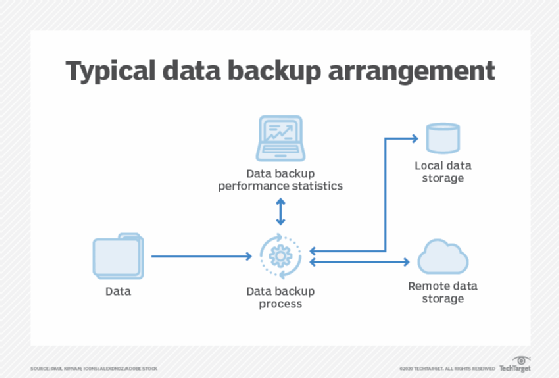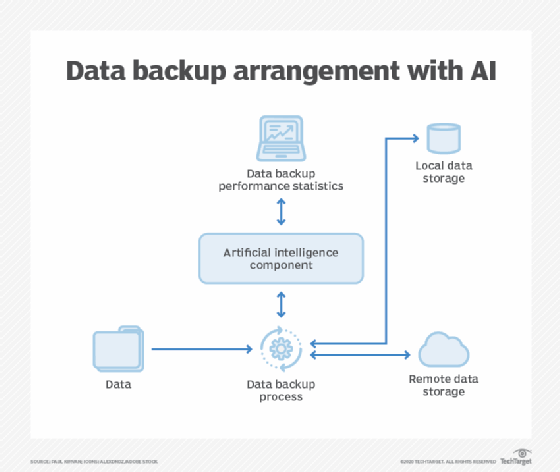
putilov_denis - stock.adobe.com
Backup and AI work together to enhance protection
'Artificial intelligence' might seem like a buzzword, but it can provide valuable services. Explore how backup and AI can improve protection for your organization.
Artificial intelligence has emerged as an increasingly important component of IT management.
In the past, planning and decision-making were based on performance data generated by the various machines in a data center. The expertise and experience of IT employees were key for using the available data for actual planning and decision-making activities. AI now provides an additional layer of experiential thinking that can synthesize many different metrics and data into intelligence that assists planning and decision-making.
Within data management, AI uses a variety of engines with programmed experience to analyze activities in many forms and generate actionable intelligence.
Traditional backup vs. backup and AI
AI that integrates with backup and recovery systems can provide a significant edge in planning and decision-making activities. For example, AI can initiate "what if" scenarios to address a variety of backup issues. IT administrators can then use this data to make more informed planning decisions.
Data passes through a backup process and routes to a variety of storage devices. The process gathers performance statistics for future review by IT administrators. Stats include what data the organization backs up, locations of the backups, dates and times of backups, and elapsed time needed to complete backups. The data backup system can also serve as the data recovery device if the organization needs stored data for an emergency requirement.

When you integrate backup and AI, the AI component sits between the data backup and recovery process and the performance data output mechanism. Depending on how the organization programs the AI, it can examine performance activities as the business backs up and retrieves data.

AI can provide a broad range of analytics, such as how the organization processes, examines and analyzes performance data. Administrators can then use results for a variety of activities, including resource planning, network planning and even disaster recovery plan development.
Tips for using AI in data backups
If your current backup and recovery systems do not have an AI component, consider whether AI-enabled systems are worth the investment. Perhaps your existing data backup vendor offers an AI upgrade. Key guidelines for integrating backup and AI include:
- Determine what additional capabilities you require to enhance planning and decision-making, specifically those capabilities not currently available from existing backup systems.
- Research AI capabilities from vendors for availability and additional cost.
- Consider launching a test with a vendor to see if its capabilities generate the desired results and adaptability to your requirements.
- Examine AI-based systems in use by other organizations.
- Conduct an ROI analysis.
- Perform a phased rollout of the AI-enabled technology to validate its capabilities based on the defined business requirements.
- Ensure that you back up the new system in a secure location so it is protected in the event of a disaster.
- Add the AI system to existing technology DR plans.
- Include the AI system in future DR plan tests.








